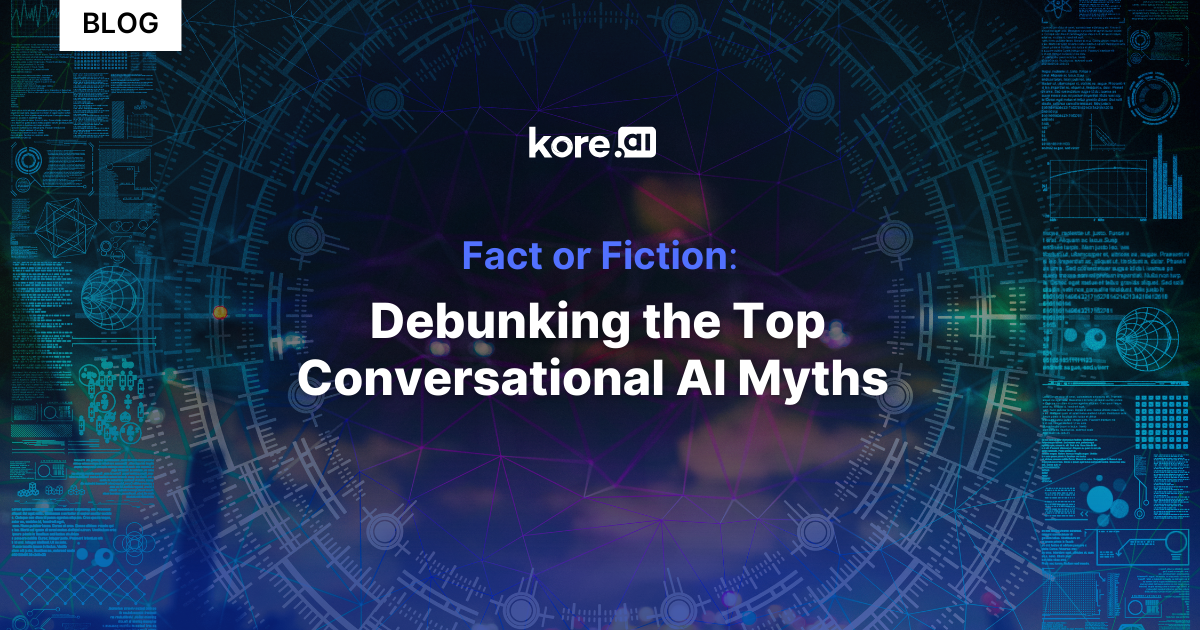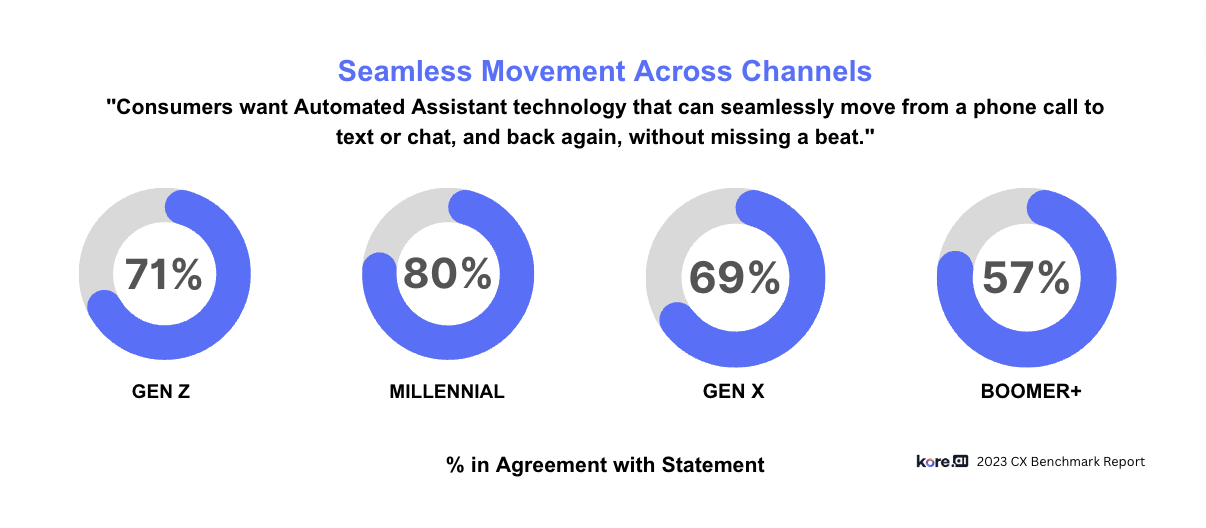
Myth #4: Conversational AI is impersonal and people are not comfortable talking to bots
According to research, Gartner predicts that by 2027 chatbots will become the primary customer service channel for about a quarter of organizations. In the context of customer service, rule-based chatbots, while useful in some cases, can feel impersonal and cold to customers. Conversational AI-powered chatbots, on the other hand, are becoming increasingly popular for customer service due to their ability to personalize experiences. The advancement of the capabilities of an intelligent bot makes this misconception fiction.
Why is conversational AI a better solution to offer personalized experiences? Advanced Natural Language Processing algorithms allow the intelligent conversational AI-powered bots to understand context and interpret nuances that feel like human conversations. Adding in a generative AI capability provides quick and personalized responses based on customer and product data.
.png?width=1280&height=280&name=2023%20CX%20Benchmark%20Report%20(1).png)
People are increasingly comfortable interacting with chatbots to receive fast and accurate responses. Surprisingly, when comparing customer service options between humans and intelligent bots, the results showed only a 7% variance in expected performance ratings for intelligent bots (70%) compared to all live agent modes (77%). The Kore.ai CX Benchmark Report also shows that more individuals are choosing to use intelligent bots for simple and complex interactions.
Myth #5: AI-powered chatbots are only available on a handful of platforms
Many businesses implement chatbots to automate tasks, improve customer experience, and offer self-service options to instantly resolve issues. However, for chatbots to be beneficial to businesses, they need to be available on more channels than just the company website. With the average person spending an average of 2 hours a day on their favorite platform, social media has become a go-to source for brand recognition and decision-making. By integrating a conversational AI-powered chatbot with social media and other messaging apps, businesses can be present where their customers are most active and accessible.
Are you curious about why businesses must have a presence where their digital customers are? Well, by using a conversational AI-powered chatbot on their preferred platform, businesses can enhance their social media and e-commerce experiences. These intelligent bots provide immediate and consistent responses, resolve issues, and establish an engaging tone around-the-clock, leading to increased engagement and brand loyalty. Furthermore, intelligent bots can assist in generating leads and sales by offering helpful and timely suggestions, upselling and cross-selling products, and guiding users through the purchasing process.

Kore.ai offers many integration options, allowing businesses to choose the right social media or e-commerce platforms for their target audience.
Myth #6: Conversational AI bots are not secure
To help answer queries accurately and in a personalized manner, intelligent bots frequently need access to enterprise systems to gather and modify data to perform these tasks. As a result, businesses need to establish proper precautions to safeguard confidential information and should handle AI integration with care. However, with the tight privacy regulations and safety precautions that conversational AI platform companies have in place, these concerns are often just misconceptions.
Here are some of the ways that Kore.ai makes conversational AI-powered chatbots secure and safe for enterprises to use:
- User authorization and authentication – A chatbot must have authorization when it works with a user’s sensitive data. User authorization ensures the right person has access to the correct data and services. Authentication, on the other hand, helps defend users’ data and devices from being misused.
- Data redaction – A user’s private information, such as their contact number, social security, and credit card details, is automatically deleted after a designated period. This feature applies to both the user and the chatbot.
- End-to-end encryption – This security feature ensures that only the communicating parties can read messages within the chat window. The conversation is encrypted in a way that only the intended recipient can decrypt it, and no one else can access it.
- Security Audits and Compliance – Regular security auditing ensures that the platform maintains required security features and complies with regulations such as GDPR, HIPAA (for medical use cases), and others.
It’s important to note that chatbots do not pose a greater security risk than other technologies. However, to ensure the successful implementation of the technology in your business and to maintain user trust, it’s crucial to prioritize the safety of the platforms used to build the AI-powered chatbot.
The latest CX Benchmark Report is here! Want to dive into the report?
Read the Report
Debunking Conversational AI Myths with Kore.ai
In a world where customer engagement is the key to success, the time to invest in conversational AI is now. With these common misconceptions cleared up, businesses can feel more assured when implementing AI-powered technology and benefit from better agent productivity while increasing customer satisfaction.
With Kore.ai, you’re stepping into a world where technology and humanity coexist harmoniously. The Kore.ai XO platform uses cutting-edge technologies such as Large Language Models (LLMs) and Generative AI to build human-like conversations that create lasting customer experiences.
Want to learn more about Conversational AI and Generative Language Models? See how the XO Platform accelerates intelligent bot development with generative AI.
Ready to embrace the dawn of a new era? Book a consultation and start your conversational AI journey today.
Discover more from reviewer4you.com
Subscribe to get the latest posts to your email.







